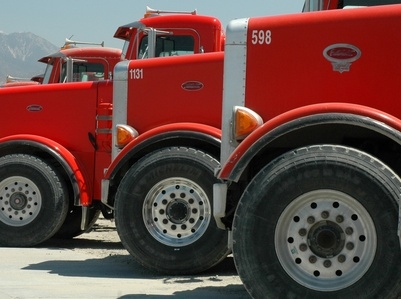
Class A motorhomes are basically buses retrofitted to move fewer people in greater luxury for a longer period of time. These land-yachts are already fairly optimized for economy from the factory; their industrial roots help to ensure that much. However, there's always room for improvement, no matter how incremental it may be. For something that gets 10 mpg on a good day, any improvement is a significant one.
This is one area in which many motorhome owners may be in luck, as long as you're willing to do a little work. Many Class A motorhomes have an adjustable air ride suspension, which allows the owner to drop their ride to the ground for easier loading and unloading and level-ground parking. Setting your motorhome to its frame-scraping lowest setting will probably yield greater gains than anything else you can do, but beware. Consider installing a set of tall, rubber "bump stops" on your axles to act a supplementary suspension and absorb road shocks while your airbags are deflated.
Your engine is tuned to deliver enough power to climb hills on demand, but this will ultimately manifest itself as wasted fuel when the going is easier. The automotive aftermarket long ago embraced the concept of plug-in diesel tuners, which can increase horsepower at the push of a button. However, these same tuners (with slightly different software) can also be used to de-rate horsepower for greater fuel economy while cruising on flat land. Contact a specialty company like Banks Engineering, Hyperchip, Superchips, Edge Performance or Bully Dog Performance and explain your needs. Any of these companies should be able to write a custom fuel-saver/flat-land program and send it to you in a plug-in tuner. Don't worry about installation; most diesel programmers are true "plug-and-play" devices. Simply plug it into your motorhome's computer access port and the tuner does the rest.
Motorhomes often come with tires optimized more for ride comfort than for fuel economy. These softer tires can create a cloud-soft ride and slightly better wet-weather performance, but they do so at the expense of increased rolling resistance and worse fuel economy. Consider dumping your stock tires in favor of those designed for those of your motorhome's semi-truck cousin. Trucking companies care far less about a soft ride than they do squeezing every last drop of fuel economy out of their tractors, making truck tires ideal if economy is your goal. You might even be able to make some money on the replacement deal itself; rock-hard tractor trailer tires (especially re-treads) are generally cheaper than specialized motorhome tires, which you might be able to sell at a profit to someone else.